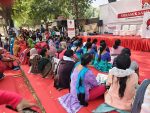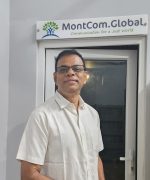New Delhi, Feb: 19, 2019: A woman’s caste in India can increase her exposure to mortality as a result of factors such as poor sanitation and inadequate water supply and health care, says a UN women report.
“The average age of death for Dalit women is 14.6 years younger than for higher caste women,” states the report, Turning promises into action: gender equality in the 2030 Agenda, citing a finding from the Indian Institute of Dalit Studies in 2013.
According to that finding, the average age at death for Dalit women was 39.5 years against 54.1 years for higher-caste women.
The report, covering 89 countries and released two-and-half years after the adoption of the UN’s 2030 Agenda, “examines through a gender lens the progress and challenges in the implementation of all 17 Sustainable Development Goals (SDGs)”.
About Dalit women in India, the UN report notes that the age at death is lower even when they experience similar mortality-related factors as higher-caste women.
“Even after accounting for social status differences, a gap of 5.48 years remains between the average age of death of higher caste women and Dalit women,” the UN report notes.
“Further, the authors [of the 2013 study] applied the levels of mortality-related factors catalogued for higher caste women and found that there is still a gap between the life expectancy for higher caste women and Dalit women.
A difference of 11.07 years remains even after attributing the Dalit social status coefficient to higher caste women. This means that life expectancy among Dalit women is 11 years lower than that of higher caste women despite experiencing identical social conditions like sanitation and drinking water.”
The report notes that in India, the “compounding effect of wealth and location also produces large inequalities”. For instance, a young woman aged 20-24 from a poor, rural household is 5.1 times as likely as one from a rich urban household to marry before the age of 18, 21.8 times as likely to have never attended school, 5.8 times as likely to become an adolescent mother, 1.3 times as likely to have no access to money for her own use and 2.3 times as likely to report she has no say in how money is spent.
“The likelihood of being poor is greater if she is landless and from a scheduled caste. Her low level of education and status in the social hierarchy will almost guarantee that if she works for pay, it will be under exploitative working conditions,” the report says.
It also notes that citizens can be effective data producers if engagement initiatives are set up. The report cites the examples of the Safecity intiative in India – a platform that crowd-sources personal stories of sexual harassment and abuse in public spaces.
“Information on harassment incidents and their location is then made available to communities and local administrators to identify factors that cause this behaviour and inform strategies and policies aimed at finding solutions. The initiative has led to positive changes,” it noted, for instance, “the closure of public toilets in one neighbourhood in Delhi resulted in an uptick in assaults on women. Using this crowdsourced information, municipal authorities were able to link the increase in assaults to the closure, prompting the local authorities to reopen and maintain the toilets.”
The report says that in 89 countries with available data, women and girls account for 330 million of the poor. “This translates to 4 more women living on less than $1.90 a day for every 100 men. The gender gap is particularly wide during the reproductive years,” it notes.
Further, it notes that “over 50 per cent of urban women and girls in developing countries live in conditions where they lack at least one of the following: access to clean water, improved sanitation, durable housing, and sufficient living area.” It notes that “1 in 5 women under the age of 50 experiences physical and/or sexual violence by an intimate partner in the past 12 months.”
On discrimination, the report states: “The identities (perceived or inherent) of individuals and groups can increase their risks of discrimination and marginalisation. Those left furthest behind in society are often women and girls who experience multiple forms of disadvantage based on gender and other inequalities.”
(ndianexpress.com)










